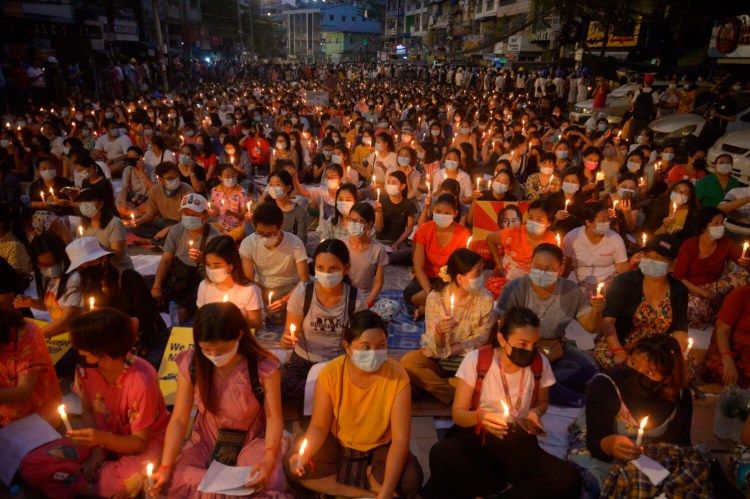Four protesters were killed, and 19 others were injured with nearly half of them in critical condition in Sein Pan ward of Mandalay, the nation’s second largest city, according to the Byamaso Emergency Clinic. Witnesses and local media outlets said three protesters were killed in Yangon overnight, two died in the Bago region and one protester was shot dead in the Magway region.
The death toll was 81 as of Friday, according to the U.N. Human Rights Office, with the latest fatalities yet to be tallied. On March 3, 21 protesters were killed, while 12 died in crackdowns on March 11.
Demonstrators continued to take to the streets in Mandalay on Saturday evening, with tens of thousands of engineers and engineering students chanting for an end to military dictatorship and the release of detained leaders including democracy icon Aung San Suu Kyi.
“Security forces are trying to scare us from joining street protests in the coming days,” said Aung Myo Nyunt, a 20-year-old student protester in Mandalay. “Their efforts will be in vain.”
Myanmar’s police detained 36 protesters in Mandalay on Saturday, according to state broadcaster MRTV. The television station accused Suu Kyi’s National League for Democracy of instigating protests and spurring unrest.
Soldiers and riot police have forced striking public servants and employees in certain sectors to return to work as the civil disobedience movement threatens a collapse in services including banking, healthcare, education and transportation. The junta asked all banks to reopen on Monday, and said actions would be taken if lenders fail to obey.
The junta’s lead spokesman, Zaw Min Tun, reiterated on Thursday that minimal force was used to disperse protesters, even as witnesses say live bullets continued to be utilized.
Zaw Min Tun said security forces will continue to enter some properties to search for protest instigators in some townships, which he added was “to ensure safety and the rule of law.”
Send questions/comments to the editors.



Comments are no longer available on this story